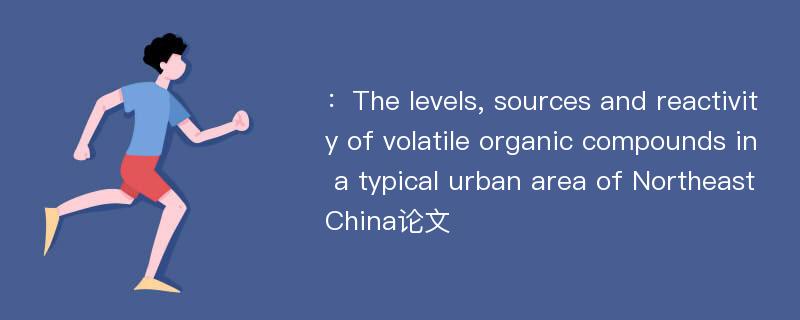
本文主要研究内容
作者(2019)在《The levels, sources and reactivity of volatile organic compounds in a typical urban area of Northeast China》一文中研究指出:Air concentrations of volatile organic compounds(VOCs) were continually measured at a monitoring site in Shenyang from 20 August to 16 September 2017. The average concentrations of alkanes, alkenes, aromatics and carbonyls were 28.54, 6.30, 5.59 and9.78 ppbv, respectively. Seven sources were identified by the Positive Matrix Factorization model based on the measurement data of VOCs and CO. Vehicle exhaust contributed the most(36.15%) to the total propene-equivalent concentration of the measured VOCs,followed by combustion emission(16.92%), vegetation emission and secondary formation(14.33%), solvent usage(10.59%), petrochemical industry emission(9.89%), petrol evaporation(6.28%), and liquefied petroleum gas(LPG) usage(5.84%). Vehicle exhaust, solvent usage and combustion emission were found to be the top three VOC sources for O3 formation potential, accounting for 34.52%, 16.55% and 11.94%, respectively. The diurnal variation of the total VOCs from each source could be well explained by their emission characteristics,e.g., the two peaks of VOC concentrations from LPG usage were in line with the cooking times for breakfast and lunch. Wind rose plots of the VOCs from each source could reveal the possible distribution of the sources around the monitoring site. The O3 pollution episodes during the measurement period were found to be coincident with the elevation of VOCs, which was mainly due to the air parcel from the southeast direction where petrochemical industry emission was found to be dominant, suggesting that the petrochemical industry emission from the southeast was probably a significant cause of O3 pollution in Shenyang.
Abstract
Air concentrations of volatile organic compounds(VOCs) were continually measured at a monitoring site in Shenyang from 20 August to 16 September 2017. The average concentrations of alkanes, alkenes, aromatics and carbonyls were 28.54, 6.30, 5.59 and9.78 ppbv, respectively. Seven sources were identified by the Positive Matrix Factorization model based on the measurement data of VOCs and CO. Vehicle exhaust contributed the most(36.15%) to the total propene-equivalent concentration of the measured VOCs,followed by combustion emission(16.92%), vegetation emission and secondary formation(14.33%), solvent usage(10.59%), petrochemical industry emission(9.89%), petrol evaporation(6.28%), and liquefied petroleum gas(LPG) usage(5.84%). Vehicle exhaust, solvent usage and combustion emission were found to be the top three VOC sources for O3 formation potential, accounting for 34.52%, 16.55% and 11.94%, respectively. The diurnal variation of the total VOCs from each source could be well explained by their emission characteristics,e.g., the two peaks of VOC concentrations from LPG usage were in line with the cooking times for breakfast and lunch. Wind rose plots of the VOCs from each source could reveal the possible distribution of the sources around the monitoring site. The O3 pollution episodes during the measurement period were found to be coincident with the elevation of VOCs, which was mainly due to the air parcel from the southeast direction where petrochemical industry emission was found to be dominant, suggesting that the petrochemical industry emission from the southeast was probably a significant cause of O3 pollution in Shenyang.
论文参考文献
论文详细介绍
论文作者分别是来自Journal of Environmental Sciences的,发表于刊物Journal of Environmental Sciences2019年05期论文,是一篇关于,Journal of Environmental Sciences2019年05期论文的文章。本文可供学术参考使用,各位学者可以免费参考阅读下载,文章观点不代表本站观点,资料来自Journal of Environmental Sciences2019年05期论文网站,若本站收录的文献无意侵犯了您的著作版权,请联系我们删除。
